Every year, millions across the world find themselves battling diseases that begin with something as small and quiet as a mosquito bite. Despite fogging drives, insecticides, and government checks on breeding grounds, infections like dengue, chikungunya, and even Zika continue to rise. Dengue, in particular, has earned its reputation as an uninvited guest, slipping past repellents and nets, and showing up in households that least expect it.
The numbers only reaffirm the urgency.
According to the National Centre for Vector Borne Disease Control (NCVBDC), in just the first three months of 2025 alone, India reported over 12,000 dengue cases. By mid-September, the Union Ministry of Health and Family Welfare confirmed 49,573 reported cases and 42 related deaths.
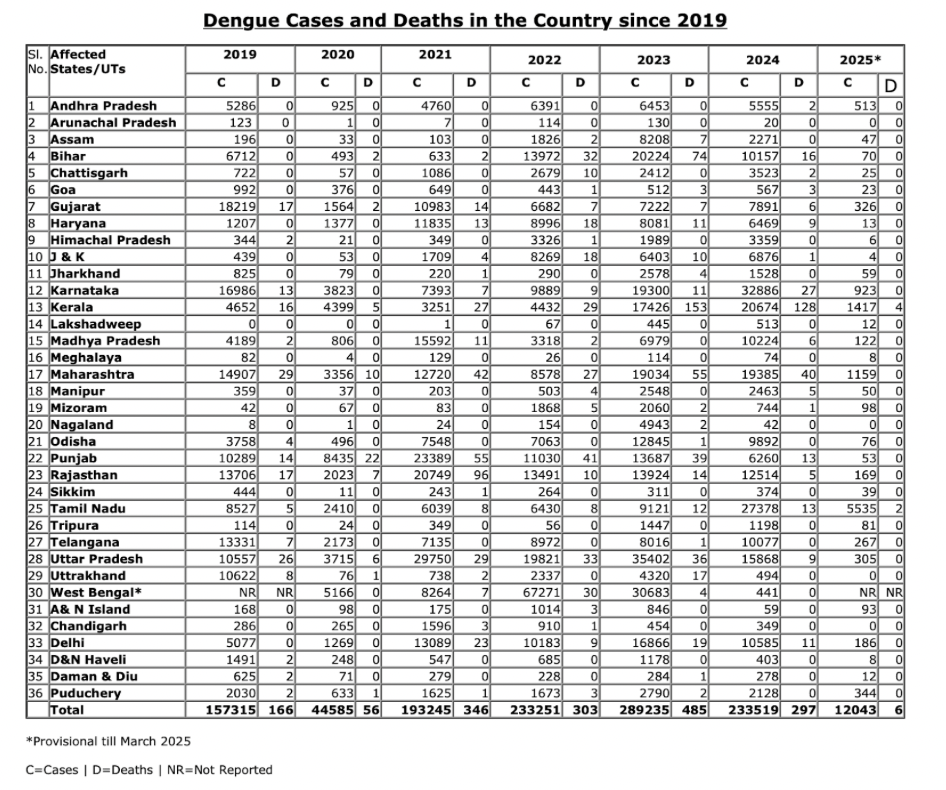
What makes dengue especially important to talk about is that it is both preventable and manageable, but only if we are aware of its early warning signs and act in time. The World Health Organization (WHO) has repeatedly emphasized that public awareness remains the strongest weapon we have in reducing its burden.
This is why understanding dengue symptoms, the early signs that often go unnoticed, the warning signs that should never be ignored, and practical ways on how to prevent dengue is no longer optional, it’s essential knowledge for every family.
And if you or your loved ones do test positive, knowing how to recover from dengue and the right foods to eat during dengue can support faster healing under medical supervision.
Meet the Culprit: The Aedes Mosquito
Behind every case of dengue lies one tiny, relentless insect, the female Aedes aegypti mosquito. Unlike many other mosquitoes that buzz around at night, this one is a daytime biter, most active in the early morning and late afternoon. It doesn’t need a swamp or a large body of water to thrive. Research from the Centers for Disease Control and Prevention (CDC) shows that even a teaspoon of fresh, stagnant water can support hundreds of eggs.
The life cycle of Aedes aegypti is short but efficient: it starts as an egg, develops into a larva, then a pupa, and within days emerges as an adult mosquito, ready to feed. What makes it particularly dangerous is not just its efficiency but its preference for breeding in human-made containers, like discarded tyres, uncovered water tanks, coolers, broken bottles, and even the little dabbas left in backyards. Urbanization and poor water storage practices have dramatically increased the breeding potential of these mosquitoes, bringing dengue closer to our homes than ever before.
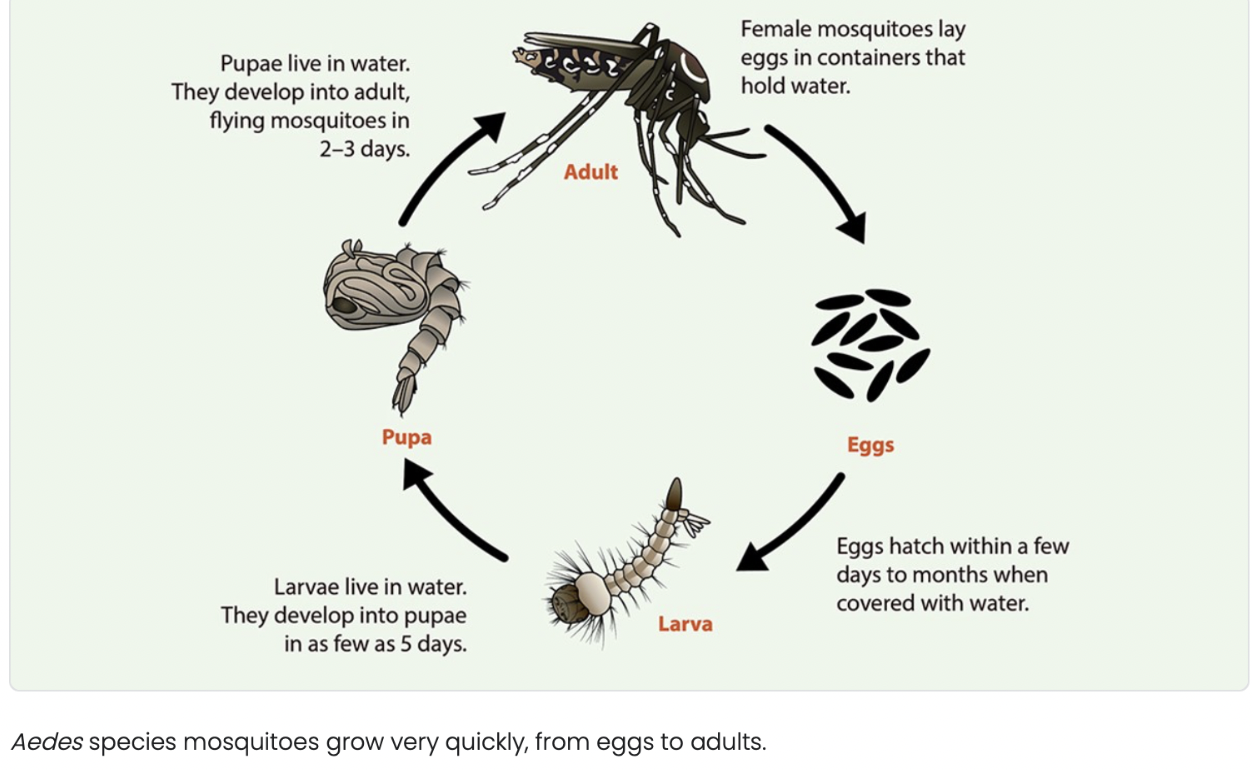
What’s equally striking is how selective this mosquito is. The female requires blood meals to develop her eggs, and in the process, she transmits viruses like dengue, chikungunya, and Zika. Dengue in particular spreads rapidly because once the mosquito is infected, it carries the virus for life and can pass it on to every person it bites thereafter.
This is why dengue is not just a medical problem but an ecological one. Most Aedes remain within 100–200 meters of where they hatch, as documented in The American Journal of Tropical Medicine and Hygiene. This means the fight against dengue begins right at home, our gardens, balconies, rooftops, and storage spaces.
Did you know?Only the female mosquito bites humans.Why? Because she needs the protein from our blood to develop her eggs. Males, on the other hand, survive largely on nectar and plant juices. And that little red bump you notice after a mosquito bite isn’t just irritation, it’s actually your immune system’s response. When the mosquito injects saliva containing anticoagulants to keep your blood flowing, your immune system releases histamines to fight off what it sees as an invader. The redness, swelling, and itch are signs that your body is actively defending you. |
What is Dengue?
Dengue is often misunderstood as just another viral fever, but it is caused by the dengue virus (DENV), which has four distinct but closely related serotypes (DENV-1 to DENV-4). A single bite from an infected female Aedes aegypti mosquito is enough to transmit the virus.
Unlike the flu or common cold, dengue is not contagious from person to person; the mosquito is the only carrier.
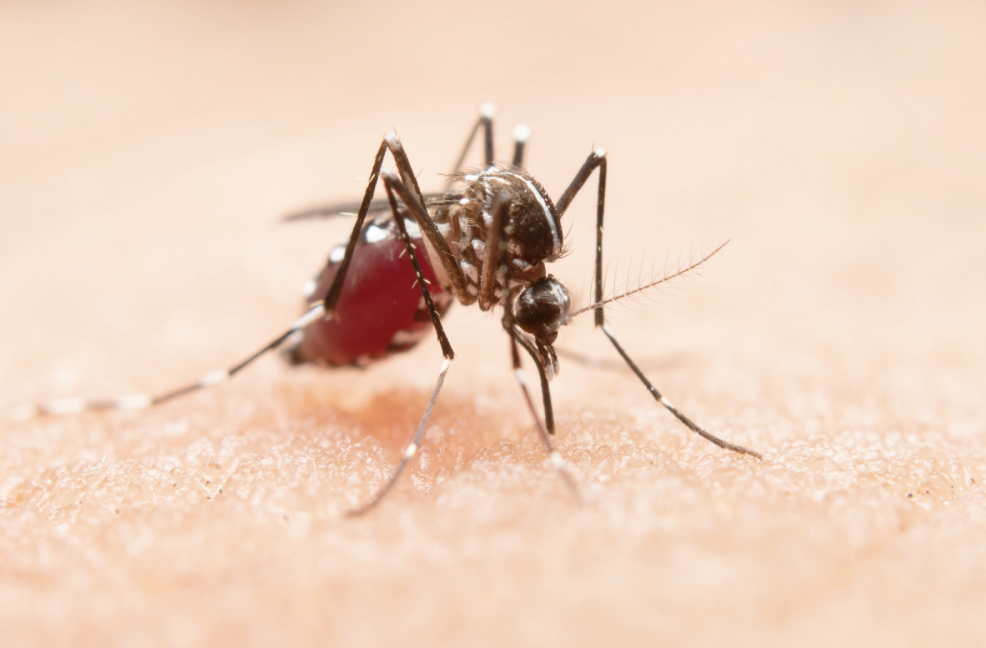
When the virus enters the body, it targets immune cells and begins to replicate, triggering an aggressive immune response. This immune reaction is what produces the wide range of dengue symptoms. People may experience a sudden spike in fever, severe headaches, pain behind the eyes, nausea, vomiting, skin rashes, or what is often called ‘breakbone fever’ due to the intense joint and muscle pain. These are considered the early signs of dengue and usually appear 4–10 days after the mosquito bite.
While many recover with timely medical care, the disease can sometimes progress to a more severe stage. The warning signs of dengue, as highlighted by the World Health Organization (WHO), include bleeding gums, blood in stools, persistent vomiting, abdominal pain, rapid breathing, and sudden drops in platelet count. At this stage, urgent medical attention becomes critical. Without it, the infection can escalate into severe dengue, characterized by plasma leakage, organ impairment, and in rare cases, fatal outcomes.
A question often asked is: Why do platelets fall in dengue?
The virus temporarily suppresses the bone marrow, the very factory where blood cells, including platelets, are made. With production slowed down and existing platelets destroyed more rapidly due to immune activity, the body’s platelet count begins to dip. Low platelets increase the risk of bleeding, which is why monitoring them closely is such an important part of dengue management.
Diagnosis of Dengue: Why Testing Early Matters
When fever strikes, many of us are quick to assume it might just be the seasonal flu, or worse, rush into labeling it as dengue. But never self-diagnose dengue symptoms. Fevers can have many culprits, like malaria, chikungunya, typhoid, and even viral influenza share overlapping signs. This is why scientific testing is not just helpful, but absolutely necessary to confirm whether it’s truly dengue or not.
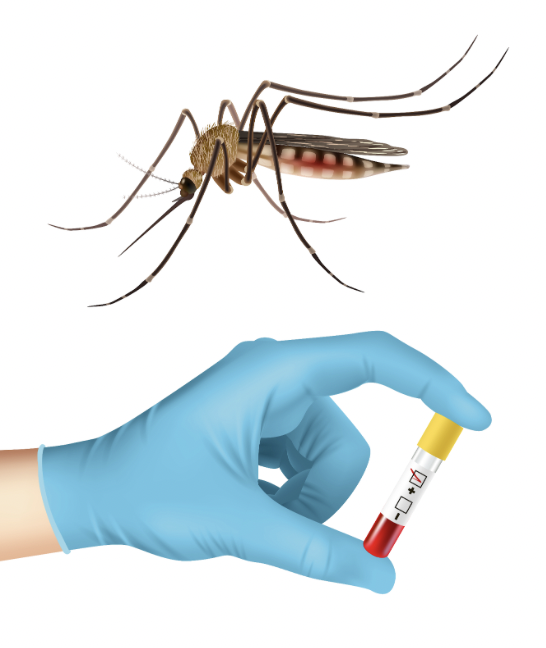
The key diagnostic tools for dengue include:
- NS1 Antigen Test: This test detects the dengue virus itself and is most effective in the first 5 days of infection. NS1 testing is found to be highly specific, making it invaluable for catching the infection early.
- IgM and IgG Antibody Tests: These blood tests become useful after day 5 of illness. IgM antibodies signal a recent infection, while IgG antibodies may point to a past infection or secondary dengue, which carries a higher risk of severity due to immune cross-reactions.
- Complete Blood Count (CBC): While not specific to dengue, the CBC helps track falling platelet levels and white blood cell counts. A sharp drop in platelets often aligns with disease progression and can serve as a red flag for warning signs of dengue.
Timely testing is more than just identifying the virus, it saves lives. Knowing the diagnosis early allows doctors to monitor the platelet count, look out for complications, and guide appropriate hydration and care, which form the cornerstone of how to recover from dengue. It also helps avoid unnecessary treatments or antibiotics, which have no role against viral infections.
Tested Positive for Dengue? What Next?
Hearing the words “You’ve tested positive for dengue” can feel overwhelming. But remember, dengue, while serious, is manageable with the right care. The path to recovery isn’t about fancy medicines; it’s about listening to your body, giving it what it needs, and avoiding what can harm it.
a) Rest Is Non-Negotiable
One of the most overlooked yet critical aspects of healing from dengue is rest. When the virus enters your system, your immune cells are already in overdrive, producing antibodies, fighting viral replication, and repairing inflammation. This demands enormous energy. The immune system reallocates energy resources away from muscles and daily functions toward defense. This is why fatigue is not just a symptom, but your body’s signal to pause. Avoid workouts, exertion, or late nights; every ounce of saved energy directly supports immune recovery.
b) Hydration Is Life-Saving
One of the biggest challenges with dengue is dehydration. The infection often causes plasma leakage, which reduces the fluid circulating in your blood vessels. This not only worsens dengue symptoms but also increases the risk of complications like low blood pressure and shock. Staying hydrated helps maintain blood volume, supports kidney function, and stabilizes vital signs during the vulnerable days of illness.
While plain water remains the foundation, your body often needs more than just hydration; it needs electrolytes. These are minerals like sodium, potassium, and chloride that regulate nerve signaling, muscle contractions, and overall fluid balance. Research published in The Lancet Infectious Diseases (Yacoub et al., 2016) emphasizes that timely electrolyte replenishment reduces the severity of dengue-related complications.

For mild cases, natural options such as coconut water, clear vegetable soups, and freshly pressed fruit juices (avoid packaged or sugar-loaded varieties) can support hydration while providing essential vitamins and minerals.
In addition, you can prepare a simple homemade electrolyte solution to restore balance:
- 1 liter of clean drinking water
- ½ teaspoon white table salt (sodium source)
- ¼ teaspoon pink salt (potassium source)
- 2 tablespoons honey or sugar (carbohydrate source for quick energy)
- Juice of 1 lemon or lime (flavor and natural acidity)
This combination helps replace fluids and essential electrolytes lost during fever. However, it’s important to remember that hydration needs can differ for each individual. Some may require medically prescribed oral rehydration salts (ORS) or IV fluids in clinical settings. Always consult your doctor before using any homemade recipe, especially if dengue symptoms worsen or warning signs appear.
By giving your body the right fluids at the right time, you reduce stress on your immune system and create an environment for quicker and safer recovery.
c) Foods to Eat During Dengue: Nutrition That Heals
Nutrition is not just fuel, it is medicine when chosen wisely. During recovery, the digestive system can be sensitive, so meals must be light yet energy-dense. Foods like khichdi with ghee, soft porridge, or mild vegetable soups provide calories without burdening digestion.
Certain foods have shown potential in supporting platelet counts and immune repair:
- Papaya leaf extract, though requiring caution, has been studied in clinical trials for its role in improving platelet counts.

- Pomegranate, kiwi, dragon fruit, and citrus fruits supply Vitamin C, antioxidants, and hydration.
- Dates, leafy greens, pumpkin seeds, and beetroot provide folate, iron, and micronutrients essential for blood formation. Add 1-2 tbsp soaked pumpkin seeds to your meal. Additionally, you can consume 150 – 200 ml of beet juice (natural- without any additives), or lightly steamed as a salad. Add a few drops of lemon juice to increase the absorption of iron.
- Herbs and spices such as tulsi, turmeric with black pepper, and star anise add natural anti-inflammatory and immune-modulating benefits.
Supplements like Vitamin B12, folate, Vitamin C, Vitamin K, zinc, and iron should be used strictly under medical supervision, as overdosing or unnecessary use may cause harm.
Important note: Prefer 1-2 fruits at a time. Avoid fruit platters. Diabetics, individuals with metabolic conditions, fatty livers, be mindful.
d) Symptom Management the Natural Way
- Skin rashes and itching: Applying aloe vera gel or calamine lotion (do a patch test first to rule out skin sensitivity) can soothe irritation.
- Joint and muscle pain: Staying hydrated and consuming anti-inflammatory foods like turmeric, ginger, and omega-rich seeds can help reduce discomfort without straining the liver, unlike certain over-the-counter painkillers, which should be avoided.
e) Monitoring Platelets and Blood Counts
One of the most important aspects of recovery is keeping an eye on your platelet and white blood cell counts through regular CBC (Complete Blood Count) tests. Adequate intake of Vitamin B12 and folate is essential to kickstart healthy blood cell formation during the recovery phase.
f) Emotional Healing: The Mind-Body Link
It’s easy to feel anxious when your body is weak, but emotional calm is a medicine too. Gentle practices like affirmations, meditation, or even simply listening to calming music can create an environment for healing at the cellular level. Remember, recovery is not just physical, it’s mental and emotional too.
If you’d like to dive deeper into practical ways to cultivate calm and resilience, you can explore our book The Calm Prescription: 75 Scientific Ways to Create Better Health, Longevity, And Happiness. It’s filled with simple yet powerful techniques, backed by science, that can help you build inner strength and peace, not just during illness, but every single day.
What to NOT Do During Dengue
Many patients make well-intentioned mistakes, like popping painkillers for body aches, ignoring early warning signs of dengue, or relying entirely on home remedies. These missteps can turn an otherwise manageable infection into a medical emergency. Let’s explore the science of what not to do when you’ve tested positive or suspect dengue.
1. Avoid NSAIDs like Ibuprofen
One of the biggest dangers in dengue is uncontrolled bleeding. Medications such as ibuprofen, and other NSAIDs interfere with platelet function and thin the blood. NSAIDs significantly increase the risk of hemorrhage in dengue patients. If pain relief is needed, doctors generally recommend paracetamol, but always under medical guidance.

2. Never Ignore Warning Signs of Dengue
Mild fever and body aches can sometimes mask the progression to severe dengue. The warning signs of dengue, bleeding gums, black stools, persistent vomiting, abdominal pain, and sudden difficulty in breathing, should never be dismissed..
3. Say No to Alcohol and Processed Foods
The liver plays a central role in metabolizing toxins and supporting immune repair during infections. Alcohol and processed foods burden the liver further, impairing its ability to function efficiently. Dengue itself can induce liver stress, and additional toxins only compound the risk. Instead of processed snacks or alcohol, focus on simple foods to eat during dengue, like home-cooked soups, fruits, and light porridges that are easy on digestion.
4. Do Not Rely Solely on Home Remedies
While traditional remedies like papaya leaf extract or herbal teas may provide some supportive benefits, relying solely on them without medical monitoring is risky. Always combine natural approaches with proper testing and medical guidance for safe recovery.
5. Don’t Skip Follow-Up Blood Tests
The early signs of dengue, like fever and fatigue, often improve after a few days, tricking patients into thinking they are recovering. But platelets can dip suddenly even as fever subsides. Daily or alternate-day monitoring of platelet and white blood cell counts only after doctor’s advisory is critical until recovery is confirmed. Skipping these tests may delay intervention if complications develop.
Prevention: Your Real Superpower
When it comes to dengue, prevention is far easier than recovery.
Stop Dengue at Its Source: Water Management
More than 70% of mosquito breeding happens in and around homes, not in distant swamps. That means prevention is truly in our hands.
- Scrub, don’t just empty: Water coolers, tanks, and pots should be drained and scrubbed weekly to remove eggs that cling to surfaces.
- Seal and cover: Overhead tanks should be properly covered to block mosquito entry. Even a small opening can become an airport for mosquito traffic.
- Declutter and discard: Old tyres, broken bottles, plastic containers, and junk lying in the yard are perfect breeding pockets.
- Fresh flowers, fresh water: Change the water in flower vases daily and scrub the container. Mosquitoes are fast breeders and can turn a vase into a nursery within days.
Personal Protection: Shielding Yourself and Loved Ones
Draining stagnant water is the first step, but personal protection adds another layer of security. Simple habits can help minimize bites:
- Dress smart: Full-sleeve clothing and light-colored fabrics reduce the chances of mosquito bites, as darker colors attract mosquitoes.
- Sleep safe: Use mosquito nets, especially for children, the elderly, and those recovering from illness.
Choosing the Right Repellent: Natural and Safe Options
Most of us are familiar with chemical repellents, but nature also offers powerful mosquito deterrents. While not always as long-lasting as chemical formulations, they can be reapplied safely and are especially useful for sensitive skin or for children under proper guidance.
Options include:
- Applying diluted neem oil or citronella oil on exposed skin.
- Using camphor diffusers indoors to repel mosquitoes naturally.
- Growing tulsi (holy basil), lemongrass, and marigold plants around the house, which have mosquito-repelling properties.
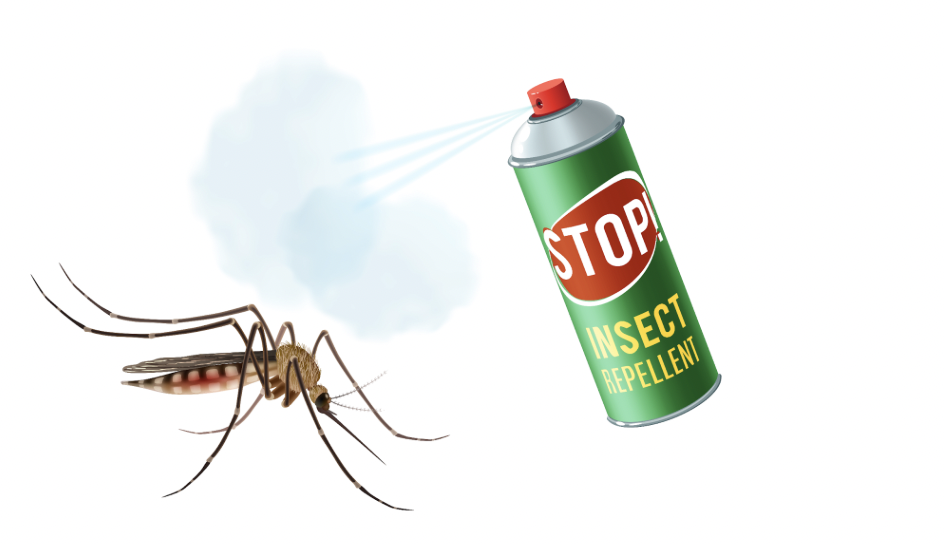
The Final Word: Awareness is Your Shield
Dengue isn’t just another seasonal fever; it’s a reminder of how closely our health is tied to our environment, our immunity, and our everyday choices. Every step you take, whether it’s keeping your surroundings clean, paying attention to the body’s signals, or supporting recovery with nourishment, becomes a part of your defense system. And equally, knowing when to seek professional help can be the difference between risk and safety.
Dengue cases are on the rise, so protect yourself and your loved ones. And, if you do get infected, follow your doctor’s treatment closely and use these tips to support a smoother recovery. Do what suits you. If you are allergic to any food, please make informed decisions and avoid it.
Be Educated, Not Influenced
If this resonated with you, then read:
Disclaimer: This blog is intended purely for educational purposes. It shares evidence-based insights on dengue symptoms, early signs, warning signs, how to prevent dengue, and supportive steps that may aid recovery. It is not a substitute for professional medical advice, diagnosis, or treatment. Remember, Dengue can escalate quickly. Early diagnosis, timely medical supervision, and preventive action are your most powerful safeguards.
Need more clarity or support?
You don’t have to navigate this alone.
Set up a one-on-one consultation with our integrative team or explore our Wellness Programs to optimize your lifestyle goals.
Reach out to us at 1800 102 0253 or write to us at consults@lukecoutinho.com.

Team Luke
Start Your Wellness Journey
Feeling inspired to take the next step in your wellness journey? Connect with us to explore how our tailored programs can support your health journey. Your transformation is just a conversation away.



